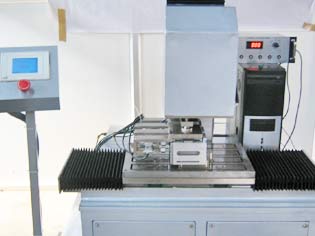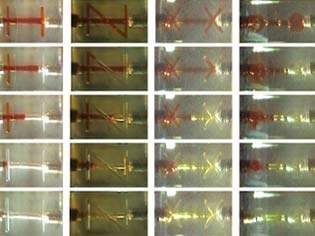
CONTACT | CAREERS | WEBMAIL | JAIN UNIVERSITY | SEARCH
 Research Research
Research Areas - Autonomous and Intelligent Systems - MEMS - Materials - RP and Coating - Energy & Environment - Nanobiosciences & Engineering Publications Projects |
 Research » Research Areas » Tribology Research » Research Areas » Tribology
MaterialsDevelopment of ambient temperature cured metal and ceramic matrix composites
Wear of cryo treated materials Study of stick-slip phenomena in machine tool slide ways Lubricants and coolants being the mainstay of the automotive and machine tool industry for reducing friction and wear become important from both the operational and manufacturing point of view. Generally speaking, the smoothness of movement is improved by reducing friction. Though frictional force is reduced by the application of lubricant it is also important to keep the frictional force steady. Unsteady or variation in frictional force leads to jerky motion or stick slip in machine tool slideways. Thus, stick slip, in tribology, is a cyclic fluctuation in the magnitudes of friction force and relative velocity between two elements in sliding contact, usually associated with a decrease of the coefficient of friction with onset of sliding or with increase of sliding velocity. In most practical sliding systems these fluctuations of the sliding velocity are considered a serious nuisance, and measures are normally taken to eliminate, or at any rate to reduce the amplitude of the fluctuations.
The requirements of linear guideways and industrial lubricants are rising, especially for machine tools which have to meet various demands such as high positioning exactness, good compatibility with coolants, stick slip free with low coefficient of friction over a wide speed range and good demulsifying behaviour on metallic slideways. The above requirements can be achieved by employing different slideway materials and design of lubricants by the addition of different additives like Boron Nitride etc. The tribological efficiency of these lubricants with regard to linear guideways is tested using a reciprocating tribometer. The research work envisages investigation of tribological efficiency of lubricant governed by a number of parameters. These include the sliding speed of the mating members, physical and chemical properties of the lubricant, demulsifying behaviour, oil groove design and geometry and the material of the sliding members involved. It is also proposed to investigate some of the tribological issues by replacing the liquid with a solid lubricant such as Molybdenum di-sulphide or Boron Nitride or Graphite impregnated into a polymer. The other aspects of study include possible oil and wear particle analysis.
|
 Home
Home


